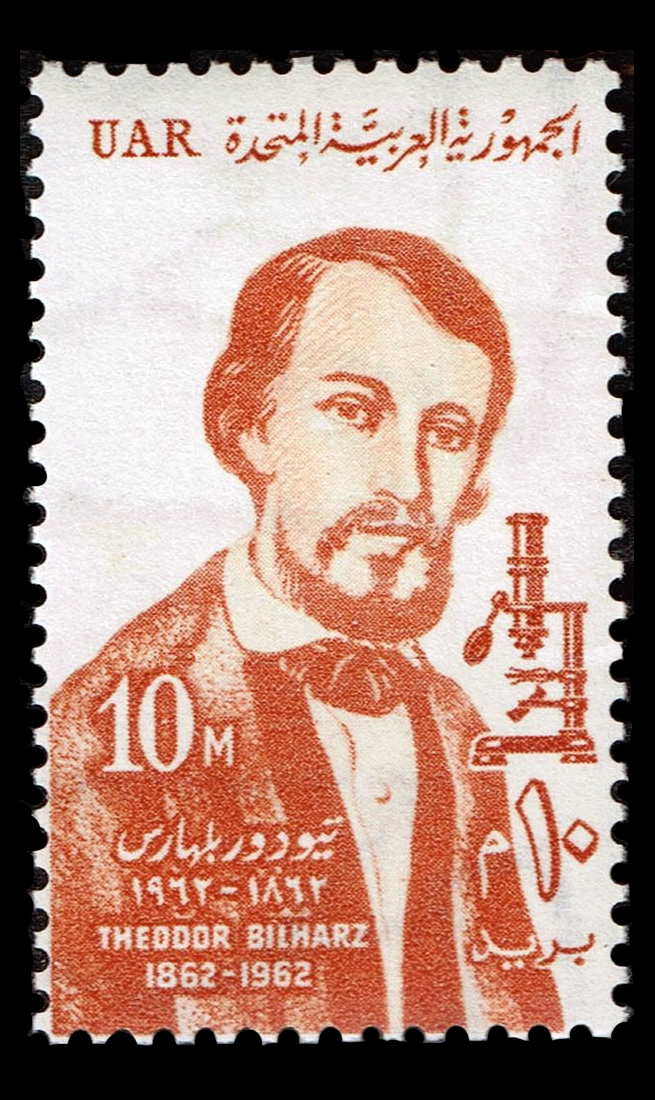The stamp
 This stamp shows Theodore Bilharz. It was issued in Egypt (then part of the United Arab Republic) in 1962, 100 years after Bilharz’s death.
This stamp shows Theodore Bilharz. It was issued in Egypt (then part of the United Arab Republic) in 1962, 100 years after Bilharz’s death.
The doctor
Theodor Maximilian Bilharz was born on 23 March 1825 in Germany. He studied medicine at the University of Tübingen.
In 1850, he travelled to Egypt and there became Chief of Surgery at the Kasr El Aini Hospital of Cairo. In 1851, during an autopsy, he discovered the trematode worm, which causes schistosomiasis. He initially called it Distomum haematobium (refeering to its two mouths), but he later realised it only had one. In 1858 it was renamed Schistosoma haematobium, from the Greek for "split body".
In 1853, Bilharz became Chief of Medicine and, in 1856, was appointed Professor of Anatomy.
Bilharz contracted typhoid fever on an expedition to Massawan and died in 1862, aged only 37. He is buried in Cairo.
The urology connections
Schistosomiasis, also known as bilharzia, is caused by the trematode worm Schistosoma haematobium which lays its eggs in the veins near the bladder; this causes fibrosis and can lead to the development of squamous bladder cancer.
← Back to Stamp Collection